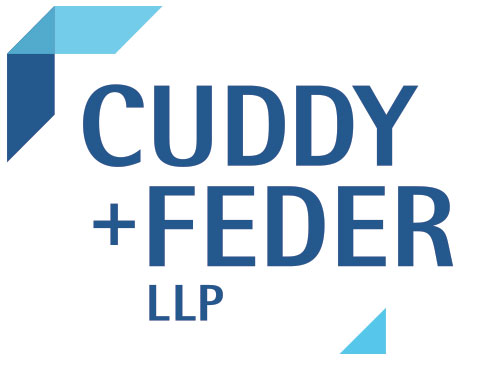
Article 12 of New York’s Navigation Law, known as the Oil Spill Act, imposes strict liability, regardless of fault, on any discharger of petroleum for all costs associated with its clean up and remediation. The statute defines discharge in terms of intentional or unintentional action or omission, which results in a release (broadly construed) of petroleum, and even imposes liability on landowners who did not actually cause such a release. While this may appear inequitable or unduly punitive, such an aggrieved landowner is not without redress and may have the ability to seek contribution for the cost of cleanup and remediation against a prior owner or other party who actually caused or contributed to a discharge.
Significantly, however, a party bringing a claim pursuant to the Act’s private right of action to recover from another party has the initial burden of establishing that the third party actually caused or contributed to the discharge. At least one court has expressly rejected the contention that a current property owner should be able to shift liability to the party or entity who owned the property at the time of the discharge, citing the imposition of liability on the current owner as a statutorily-defined discharger (regardless of causation or, more appropriately, lack thereof).1 Instead, the court noted that the current owner’s remedy is in its direct claim against the prior owner based on that individual’s liability as a discharger since the Act also imposes liability for conduct and not simply status. Importantly, however, if it is established that the current owner caused or contributed to a spill, that owner can be precluded from seeking contribution from a third party.
Illustrative of this is the case of State v. C.J. Burth Servs., Inc.,2 where the Appellate Division, Third Department held the present owner of property strictly liable under the Act even where the owner concededly had no knowledge of the existence of storage tanks or contamination on the property when it was purchased. In C.J. Burth, when the defendant owners purchased the property at issue it was being used as an automobile repair business; there were no gas tanks, pumps, or other indications on the property that petroleum had been stored there. Years later, the defendants learned of the presence of several underground storage tanks (“USTs”), which were removed and found to be corroded and riddled with holes. The defendants refused to pay for or take remedial action, thereby forcing the State to commence an action under the Navigation Law to recover its expenses for remediation efforts.
Although the Court acknowledged that the defendants “did not cause the contamination, did not control the site when the contamination occurred, and had no knowledge of the existence” of the USTs when they purchased the property, the Court held that liability does not rest on “fault or knowledge,” but instead on the “owner’s capacity to take action to prevent an oil spill or to clean up contamination resulting from an oil spill.”3 The Court confirmed that it was the defendants’ status as owners of the property where a discharge occurred, and not any causal connection to the discharge, that resulted in the Court imposing liability on them.
Given the breadth of liability imposed by the Act, it is not uncommon for purchasers and owners of property to bargain for contractual limitations of liability for discharges occurring prior to the vesting of their fee interest. One approach has been to include a general “as is” clause in the contract of sale, by which the seller purports to limit liability for any discharges occurring during the seller’s ownership of the property. Several cases4 have found such clauses to be ineffective as a shield to liability, though only because the clauses as drafted were insufficiently explicit in their exculpation of the parties seeking their enforcement. Indeed, the lesson from those cases seems to be that the intent to relieve a party of responsibility for a discharge must be clear and unequivocal or a court will not give it effect.
Other means of attempting to prevent liability also exist. Statutory mechanisms available under the Act to shield a party from liability include indemnification and contribution, which allow an aggrieved landowner to seek from a prior owner or actual discharger any amounts ultimately paid out in a judgment. For indemnification or contribution to be available to an aggrieved landowner, she must be entirely faultless, that is, not at all responsible for the discharge or discharges alleged.5 Thus, if a party has in any manner or to any degree contributed to a discharge, she is precluded from seeking indemnification or contribution from an actual discharger. Nevertheless, another provision of the Act does provide a substantive right to seek contribution from a responsible party, regardless of fault of the aggrieved landowner, so long as there is proof that the other party is a discharger. In the case of a tenant’s discharge, a landlord may be found to be a responsible party – and therefore subject to liability for expenses incurred in remediation of a discharge – where he had control over the activities on the property and reason to believe that petroleum products were being used.6
Ultimately, limiting liability under the Act when a party has at all contributed to the discharge or spill of petroleum on property, despite the nature or degree of that contribution, presents significant challenges. Reliance on the provided statutory mechanisms comes with its own risks, particularly in the context of a landlord-tenant relationship. In light of these considerations, clearly and unequivocally contracting away liability at the time of purchase/sale or leasing appears to be the strongest means of protection available to a party who is concerned that a discharge may have occurred.
- White v. Regan, 171 A.D.2d 197, 200, 575 N.Y.S.2d 375, 377 (3d Dep’t 1991).
- 79 A.D.3d 1298, 1301, 915 N.Y.S.2d 174, 176 (3d Dep’t 2010).
- Id. at 176 (internal citations omitted) (internal quotation marks omitted).
- Seligson v. Russo, 91 A.D.3d 462, 463, 937 N.Y.S.2d 10, 11 (1st Dep’t 2012); Umbra U.S.A., Inc. v. Niagara Frontier Transp. Auth., 262 A.D.2d 980, 980, 693 N.Y.S.2d 371, 372-73 (4th Dep’t 1999).
- N.Y. Nav. Law § 181(6); White v. Long, 85 N.Y.2d 564, 568, 650 N.E.2d 836, 838 (1995); Dora Homes, Inc. v. Epperson, 344 F. Supp. 2d 875, 891 (E.D.N.Y. 2004).
- State v. Green, 96 N.Y.2d 403, 407, 754 N.E.2d 179, 182 (2001).
